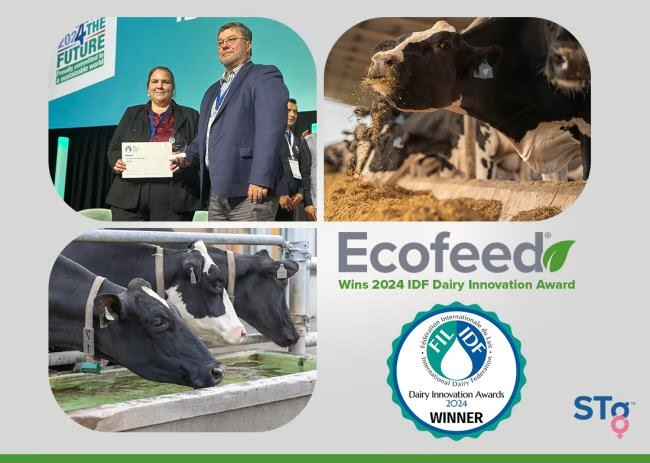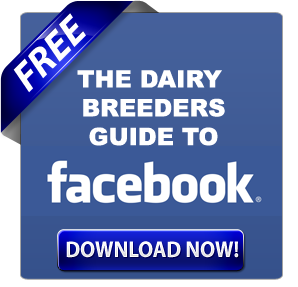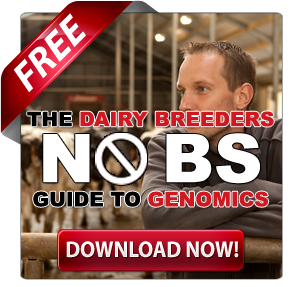Texas dairy’s 190% surge rewrites the rulebook. From desert to dominance, they’re milking success dry. Is your state next on their hit list?
EXECUTIVE SUMMARY: Texas has revolutionized the U.S. dairy industry, skyrocketing from sixth to third place in milk production with a staggering 190% growth since 2001. This transformation, driven by massive investments in processing capacity and innovative water management in the semi-arid Panhandle, has reshaped the national dairy landscape. Despite challenges like Ogallala Aquifer depletion, Texas dairies are leveraging cutting-edge technology and economies of scale to outpace competitors in efficiency and productivity. Their aggressive growth strategy, coupled with strategic positioning in global markets, signals a potential threat to Wisconsin’s long-held second-place ranking. As Texas continues to push boundaries in dairy production, sustainability, and value chain integration, it’s forcing a global rethinking of modern dairy scalability and resource management.
KEY TAKEAWAYS:
- Texas achieved 190% growth in milk production since 2001, leapfrogging to 3rd place nationally.
- Massive investments in cheese processing plants are driving demand and fueling continued expansion.
- Innovative water management and methane monetization are turning environmental challenges into competitive advantages.
- Texas dairies are outperforming in productivity, reaching 25,932 pounds of milk per cow annually.
- The state’s growth trajectory and global market positioning suggest potential to challenge Wisconsin’s #2 spot in the future.

Texas isn’t just producing milk—it’s bulldozing through the national rankings and shaking up global dairy markets. The latest USDA figures confirm what forward-thinking producers have witnessed: Texas has muscled Idaho out of America’s #3 dairy spot. And they didn’t just edge them out—they shoved them aside with production figures with traditional dairy powerhouses sweating bullets.
While California and Wisconsin cling to their historic crowns, Texas has rocketed from sixth place to third in less than a decade. The question keeping dairy executives up at night is: Who’s next on Texas’s hit list?
GROWTH ON STEROIDS: The Numbers That Make Competitors Dizzy
Let that sink in: Texas cows went from backup singers to headliners, pumping out 190% more milk since Y2K had us scared of computer crashes.
Juan Piñeiro from Texas A&M puts it in black and white: Texas milk production shot from 5.1 billion pounds to 14.8 billion pounds between 2001 and 2020. That’s not growth—a revolution happening in slow motion for everyone except Texas producers.
Need fresh proof? When 2022 numbers dropped, Texas had climbed another 6.7% in volume, enough to kick Idaho to the curb and claim that bronze medal position. And they haven’t taken their foot off the gas.
Between 2015 and 2022 alone, Texas dumped another 6.2 billion pounds of milk onto the market—a 60.5% growth spurt that makes the competition look fossilized. The USDA’s latest numbers show Texas added another 15,000 cows this year while other states are begging producers to stay in business.
Remember when Texas was barely on the dairy map? They were stuck in sixth place a decade back behind California, Wisconsin, New York, Idaho, and Pennsylvania. Now they’re breathing down Wisconsin’s neck with only California (41.8 billion pounds) and Wisconsin (31 billion pounds) still ahead. The question isn’t if Texas will keep climbing—it’s what the traditional dairy belt plans to do about it.
THE GLOBAL DAIRY SPEEDWAY: How Growth Rates Stack Up Worldwide
| Region | Annual Growth Rate | Key Driver | Water Risk |
| Texas Panhandle | 6.7% | Processing capacity | High (Ogallala depletion) |
| Gujarat, India | 8.1% | Buffalo milk demand | Extreme (monsoon reliance) |
| Inner Mongolia | 9.4% | Government subsidies | Critical (desertification) |
Sources: USDA Agricultural Statistics (2022), FAO Dairy Market Review (2022), China Agricultural Yearbook
THE BIG LEAGUE SHOWDOWN: America’s Dairy Map Redrawn
| State | Annual Production (billions lbs) | Change Since 2015 |
| California | 41.8 | -2.4% |
| Wisconsin | 31.0 | +5.8% |
| Texas | 16.5 | +60.5% |
| Idaho | 16.6 | +17.7% |
Source: USDA Milk Production Reports (2022)
PROCESSING POWERPLAY: The Cheese Factory Explosion Driving Texas’s Boom
What’s fueling this meteoric rise? It isn’t just more cows—cheese plants sprouting up faster than oil derricks in a Texas boom town.
Texas dairy producers aren’t just pumping out milk—they’re orchestrating a full-scale value chain takeover. Processors aren’t politely asking for milk—they’re fighting for tanker loads and signing long-term contracts that make bankers smile, and loan officers approve expansion plans without blinking.
The Panhandle has transformed into America’s newest cheese corridor almost overnight. Cacique LLC fired up their Mexican-style cheese factory in Amarillo in 2022, and they’re already struggling to secure milk supplies. Fifty miles north in Dumas, another processing giant is gulping down tanker loads daily.
Meanwhile, dairy heavyweight Leprino Foods is dumping serious cash—billions—into a massive mozzarella and whey protein complex in Lubbock. Set to start churning out cheese by 2026, this plant alone will change the game for Texas producers.
The processing boom spills beyond state lines but feeds Texas’s dairy machine. When it comes online in 2024, Hilmar Cheese Company’s mega-plant in Dodge City, Kansas, will be swallowing Texas milk by the tanker load.
As Darren Turley from the Texas Association of Dairymen puts it, these plants will create demand for “over 200 loads of additional milk sales per day” when fully operational. That’s not just a market—a milk vacuum with producers expanding herds with confidence. Why? Because they know their milk has somewhere to go—and that somewhere is paying premium prices.
TOUGH QUESTIONS: The Water Time Bomb Under Texas Dairy
While Texas pats itself on the back, Nebraska ranchers ask: “At what cost?” The Ogallala Aquifer—the lifeblood for eight states—is dropping 1-2 feet yearly in many areas. Texas dairies now tap a significant portion of its flow in dairy-heavy counties. Sustainable? Or a time bomb?
The hard facts: The USGS confirms that the Ogallala Aquifer has declined more than 300 feet in some parts of the Texas Panhandle since pumping began. Unlike surface water, which replenishes yearly, the Ogallala recharges at glacial rates—sometimes less than an inch annually against extraction measured in feet.
“Water isn’t renewable in our region in human timeframes,” explains Venki Uddameri, the Water Resources Center director at Texas Tech. “Once it’s gone, it’s effectively gone.”
But Texas producers aren’t looking the other way. They’re betting on water-use efficiency innovations that could rewrite the rules of dairy production in water-scarce environments:
- Closed-loop waste systems capturing 65-80% of water from manure streams for reuse
- Targeted irrigation delivering precisely measured water directly to crop root zones
- Drought-resistant forage varieties reduce water needs by up to 30%
BY THE NUMBERS: Texas’s Quarterly March to Dominance
| Quarter | Milk Cows (1,000 head) | Milk Production (billion pounds) | Change (vs. previous year) |
| Q1 2022 | 634 | 4.0+ | +5% |
| Q1 2021 | 617 | 3.8 (est.) | N/A |
Source: Texas Farm Bureau (2022)
WATER WIZARDRY: Making Desert Dust Into Dairy Gold
Picture this: 12-18 inches of rain annually. That’s less water than falls in parts of Iraq. Does it sound like a bad joke about dairy farming? Not for Texas producers—they’re turning desert dust into dairy gold.
The most jaw-dropping part of Texas’s dairy revolution isn’t just the growth—it’s where it’s happening. The Panhandle gets less annual rainfall than parts of Arizona, yet they’re milking 675,000 cows in what amounts to a semi-desert.
“The Panhandle is a semi-desert,” Piñeiro explains with classic Texas understatement. “We are in a severe drought right now.”
So, how are they pulling off this magic trick? Texas producers aren’t just using water—they’re stretching every drop like liquid gold. They’re deploying cutting-edge irrigation tech, drought-resistant forage varieties, and management strategies that would make a water conservation expert weep joyfully.
Here’s the kicker: Texas dairies are outbidding traditional crop farmers for water rights because they’re getting more bang per drop. A gallon of water pumped through a dairy cow generates more revenue than a gallon sprayed on cotton or corn. It’s simple economics, and Texas producers are masters at turning constraints into competitive advantages.
THE METHANE MONEY MACHINE: Environmental Challenge Becomes Profit Center
Texas dairies aren’t just managing their methane emissions but turning them into serious revenue streams. The debate around methane digesters reveals three distinct perspectives shaping the future of dairy sustainability:
Producers see dollar signs. Del Rio Dairy’s digester now fuels 200-300 semi-trucks annually through renewable natural gas conversion, adding $20-30 per cow in annual revenue. When scaled across a 5,000-cow dairy, that’s $100,000-150,000 in additional income.
Environmental scientists see potential but warn of leakage issues. Cornell University research shows poorly maintained digesters can leak 3-5% of methane, potentially negating climate benefits. “It’s not a silver bullet without proper management,” notes Dr. Peter Wright, dairy waste management specialist.
Policy experts question long-term viability. “These 15-year contracts could become anchors if carbon markets crash post-2035,” cautions the Texas Association of Dairymen. California’s shifting regulatory landscape demonstrates how quickly profitable environmental programs can change.
The difference between Texas and other regions is that they’re not waiting for perfect solutions—they’re monetizing methane while others debate theory.
PRODUCTIVITY POWERHOUSE: Super Cows Pumping Super Volumes
Texas isn’t just adding cows—it’s building super cows. Their dairy herds are pumping out milk like high-performance sports cars, not the family sedans of yesteryear.
Fresh USDA data shows Texas has leapfrogged Colorado in milk per cow, hitting a staggering 25,932 pounds per animal annually. That’s not just good genetics—cutting-edge nutrition, cow comfort systems that would make a five-star hotel jealous, and milking technology that maximizes every drop.
Texas now sits in the bronze medal position nationally for both cows per herd and milk per herd. Their operations aren’t just getting bigger—they’re getting brutally efficient. While traditional dairy states cling to smaller herd models, Texas is scaling up faster than Silicon Valley startups, leveraging economies of scale that make their water-acquisition costs look like rounding errors.
Wisconsin’s 1.27 million cows still dwarf Texas’s 675,000 head, but the productivity gap is shrinking faster than ice cream on a Texas summer day. With Texas producers adopting technology that turns good cows into milk machines, the pounds-per-cow race is tightening every quarter.
THE WISCONSIN QUESTION: Can The Lone Star Take The Silver Medal?
Could Texas dethrone America’s Dairyland? Industry experts are skeptical, but they never saw Texas climbing from sixth to third place in a single decade.
With Wisconsin churning 31 billion pounds annually against Texas’s 16.5 billion, the gap remains more expansive than the Rio Grande. Piñeiro admits, “It’s unlikely that Texas will ever produce more milk than California or Wisconsin.”
But here’s a fact that should keep Wisconsin farmers awake at night: Their production grew just 5.8% over five years, while Texas exploded by 60.5%. At those growth rates, simple math suggests the impossible becomes possible within a decade.
The distance between Texas and Wisconsin in terms of both cow numbers and milk volume seems insurmountable today. But remember—nobody predicted Texas would climb three spots in the national rankings faster than you can say, “Don’t mess with Texas.”
Is Wisconsin truly untouchable, or just the next target on Texas’s hit list? What seemed impossible five years ago is today’s reality. What seems impossible today might be tomorrow’s headline.
FREQUENTLY ASKED QUESTIONS: Texas Dairy Expansion
Q: How much water does a Texas dairy cow use daily? A: According to USDA water-use metrics, a dairy cow in the Texas Panhandle requires approximately 30-35 gallons daily for drinking and an additional 70-100 gallons per day in associated production activities, including cleaning and cooling. That’s roughly 36,500 gallons annually per cow.
Q: Are Texas dairies sustainable with Ogallala Aquifer depletion? A: The sustainability question remains unresolved. While extraction rates exceed natural recharge by significant margins, technological innovations in water recycling and conservation are rapidly improving efficiency. The Texas Water Development Board projects most Panhandle counties have 25-50 years of water remaining at current use rates.
Q: How do Texas dairies compare globally in terms of growth rates? A: At 6.7% annual growth, Texas outpaces most established dairy regions worldwide but trails emerging markets like Inner Mongolia (9.4%) and Gujarat, India (8.1%). However, Texas demonstrates superior infrastructure development and technological adoption compared to these faster-growing regions.
THE FUTURE FRONTIER: Texas-Sized Ambitions Meet Global Competition
As Texas cements its #3 position, the real question isn’t about domestic rankings but positioning in global markets. Can the industry overcome its most significant challenge—water—while competing with subsidized producers in China and low-cost operations in emerging markets?
Water remains the Achilles’ heel that could bring this dairy juggernaut to its knees. But betting against Texan ingenuity has been a losing proposition for two decades. Will Texas producers pioneer water recycling systems that make today’s conservation efforts look primitive? Or will the Ogallala Aquifer finally say “enough”?
The processing capacity explosion provides a rock-solid foundation for continued expansion. With three major cheese plants under development, Texas isn’t just producing milk—it’s capturing more of the value chain. Will it transition from commodity players to branded dairy powerhouses? The smart money says yes.
What’s crystal clear is that Texas hasn’t just changed America’s dairy map—they’ve ripped it up and redrawn it. From dairy afterthought to industry disruptor in two decades, the Lone Star State has demonstrated that vision, technology, and sheer Texas-sized determination can move mountains—or, in this case, create dairy empires where logic said none should exist.
California and Wisconsin may hold their historical crowns for now, but Texas isn’t playing for bronze anymore—they’re hunting bigger game. And if history is any guide, they usually get what they’re after.
THE BULLVINE BOTTOM LINE:
Texas didn’t politely ask Idaho to step aside—they bulldozed past them with a 190% production explosion, redefining what’s possible in American dairy. With cheese plants sprouting like Texas bluebonnets after spring rain and producers making milk where cacti should be the only thing growing, the Lone Star State is teaching the entire industry what happens when you combine ambition with cutting-edge technology.
Their Achilles’ heel? Water. Their superpower? Turning limitations into innovations. Betting against Texas dairy has cost skeptics money for twenty years, and there’s no sign they’re slowing down. Wisconsin might still have breathing room, but they’d be fools not to look over their shoulders.
Texas isn’t just climbing rankings—it’s forcing a global reckoning with how modern dairies scale. Will your operation adapt or get bulldozed? That’s the question innovative producers are asking themselves tonight.
LEARN MORE:
- Texas Dairy Boom Spurs Soaring Demand for Local Wheat and Triticale Feed Options
- Walmart to Build Third Milk Processing Plant in Texas
- Texas Closes In on Idaho’s Milk Production, Achieves Record Growth in 2023
 Join the Revolution!
Join the Revolution!
Join over 30,000 successful dairy professionals who rely on Bullvine Daily for their competitive edge. Delivered directly to your inbox each week, our exclusive industry insights help you make smarter decisions while saving precious hours every week. Never miss critical updates on milk production trends, breakthrough technologies, and profit-boosting strategies that top producers are already implementing. Subscribe now to transform your dairy operation’s efficiency and profitability—your future success is just one click away.







 Join the Revolution!
Join the Revolution!





